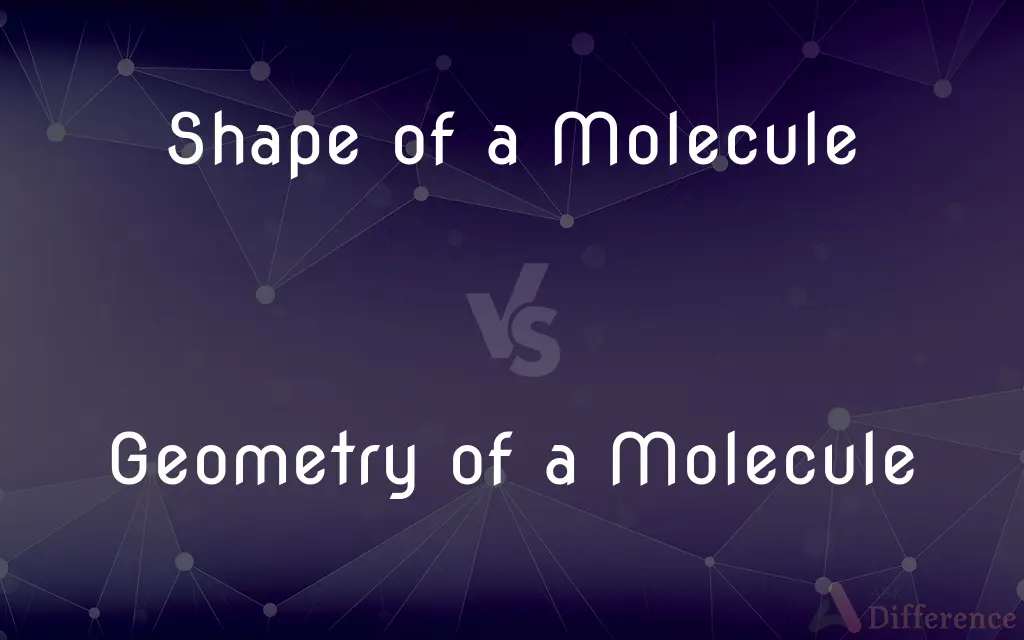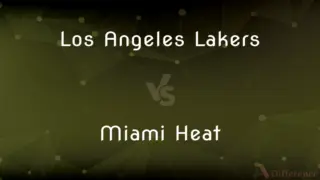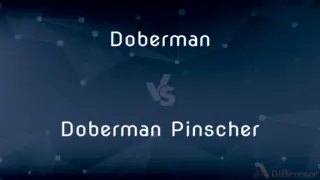Shape of a Molecule vs. Geometry of a Molecule — What's the Difference?
Edited by Tayyaba Rehman — By Urooj Arif — Published on February 23, 2024
The shape of a molecule refers to its three-dimensional arrangement excluding lone pairs, focusing on atom positions, while geometry considers all electron pairs, including lone pairs, defining the molecule's spatial arrangement.

Difference Between Shape of a Molecule and Geometry of a Molecule
Table of Contents
ADVERTISEMENT
Key Differences
The shape of a molecule is determined by the spatial arrangement of its atoms, influenced by the VSEPR (Valence Shell Electron Pair Repulsion) theory. It describes how atoms are positioned in three dimensions but often excludes the effects of lone pairs on the overall shape, focusing instead on the molecule's visible structure. In contrast, the geometry of a molecule includes both the positions of atoms and the orientation of all electron pairs (bonding and lone pairs) around the central atom, offering a complete picture of the molecule's spatial configuration.
When discussing molecular shape, chemists refer to the physical form created by the arrangement of atoms, such as linear, trigonal planar, or tetrahedral. This is crucial for understanding how molecules interact with each other and their chemical properties. The geometry of a molecule, incorporating the VSEPR model, provides insight into the molecule's electronic structure, helping predict molecular behavior, bond angles, and reactivity based on electron pair repulsions.
For example, the water molecule (H2O) has a bent shape due to the two hydrogen atoms and the two lone pairs on the oxygen atom. However, its geometry is described as tetrahedral when considering the orientation of all electron pairs. This distinction is vital for understanding the molecule's polarity and its physical and chemical properties.
In teaching and practical applications, the shape of a molecule is often discussed in the context of its steric effects, which influence reactivity and physical properties, while its geometry is analyzed to predict molecular behavior based on theoretical models. Both concepts, although closely related, serve different purposes in molecular science.
The understanding of both shape and geometry is essential for grasping the complexity of molecular interactions and the principles of chemical bonding. They are foundational concepts in chemistry that guide scientists in predicting the behavior of molecules in various environments.
ADVERTISEMENT
Comparison Chart
Definition
The three-dimensional arrangement of atoms in a molecule, excluding lone pairs.
The spatial arrangement of all electron pairs (bonding and lone pairs) around the central atom.
Focus
Positions of atoms.
Positions of both atoms and electron pairs.
Determined By
VSEPR theory, focusing on atom positions.
VSEPR theory, considering all electron domains.
Examples
Bent (H2O), Linear (CO2), Tetrahedral (CH4).
Tetrahedral (H2O), Linear (CO2), Octahedral (SF6).
Used For
Understanding molecular interactions, reactivity based on atom positions.
Predicting molecular behavior, bond angles, and reactivity based on electron pair repulsions.
Compare with Definitions
Shape of a Molecule
Linear molecules have atoms in a straight line.
CO2 is linear because the oxygen atoms are directly opposite each other.
Geometry of a Molecule
Tetrahedral geometry includes lone pairs.
H2O's geometry is tetrahedral considering its two lone pairs on oxygen.
Shape of a Molecule
Bent shape excludes lone pairs.
H2O's shape is bent due to its two hydrogen atoms.
Geometry of a Molecule
Linear geometry involves all electron pairs.
CO2's geometry is linear, including bonding pairs.
Shape of a Molecule
Tetrahedral shape involves four atoms around a central atom.
CH4 has a tetrahedral shape with hydrogen atoms at the corners.
Geometry of a Molecule
Octahedral geometry has six atoms or electron pairs around a central atom.
SF6 has an octahedral geometry.
Shape of a Molecule
Trigonal planar molecules have three atoms around a central atom in a plane.
BF3 is trigonal planar.
Geometry of a Molecule
Trigonal bipyramidal geometry has five atoms or electron pairs in a unique arrangement.
PCl5.
Shape of a Molecule
Pyramidal shapes have a base of three atoms and one atom above the base.
NH3 is pyramidal.
Geometry of a Molecule
Square planar geometry involves four atoms or electron pairs in a square layout.
XeF4 is square planar.
Common Curiosities
What determines the shape of a molecule?
The shape is determined by the spatial arrangements of atoms, governed by the VSEPR theory.
Why is the geometry of a molecule important?
It helps predict the molecule's electronic structure, behavior, and properties based on electron pair repulsions.
What is the difference between molecular shape and geometry in terms of electron pairs?
Shape considers only the arrangement of atoms, while geometry includes both bonding and lone electron pairs.
Why might two molecules with similar shapes have different geometries?
Differences in lone pairs can result in similar shapes but different overall geometries.
What role do lone pairs play in determining molecular geometry?
Lone pairs repel bonding pairs, affecting bond angles and thus the overall geometry.
How does the shape of a molecule influence its properties?
The shape affects how molecules interact, their reactivity, and physical properties like boiling and melting points.
How does the VSEPR theory apply to both shape and geometry?
It predicts both by considering repulsions between electron pairs, but focuses on atoms for shape and all electron pairs for geometry.
Can the geometry of a molecule affect its polarity?
Yes, the spatial arrangement of electron pairs influences the molecule's overall polarity.
How do chemists use molecular shape and geometry?
They use these concepts to predict chemical behavior, design molecules for specific functions, and understand reaction mechanisms.
Can a molecule's shape be the same as its geometry?
In molecules without lone pairs, the shape and geometry can be identical.
Share Your Discovery

Previous Comparison
Los Angeles Lakers vs. Miami Heat
Next Comparison
Doberman vs. Doberman PinscherAuthor Spotlight
Written by
Urooj ArifUrooj is a skilled content writer at Ask Difference, known for her exceptional ability to simplify complex topics into engaging and informative content. With a passion for research and a flair for clear, concise writing, she consistently delivers articles that resonate with our diverse audience.
Edited by
Tayyaba RehmanTayyaba Rehman is a distinguished writer, currently serving as a primary contributor to askdifference.com. As a researcher in semantics and etymology, Tayyaba's passion for the complexity of languages and their distinctions has found a perfect home on the platform. Tayyaba delves into the intricacies of language, distinguishing between commonly confused words and phrases, thereby providing clarity for readers worldwide.
















































